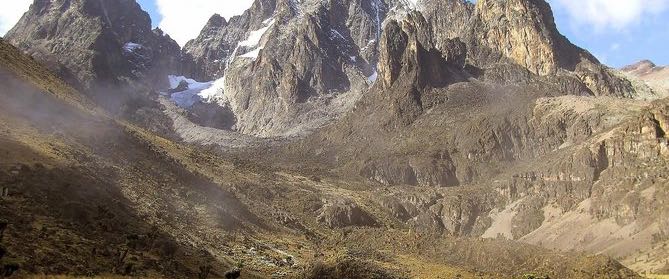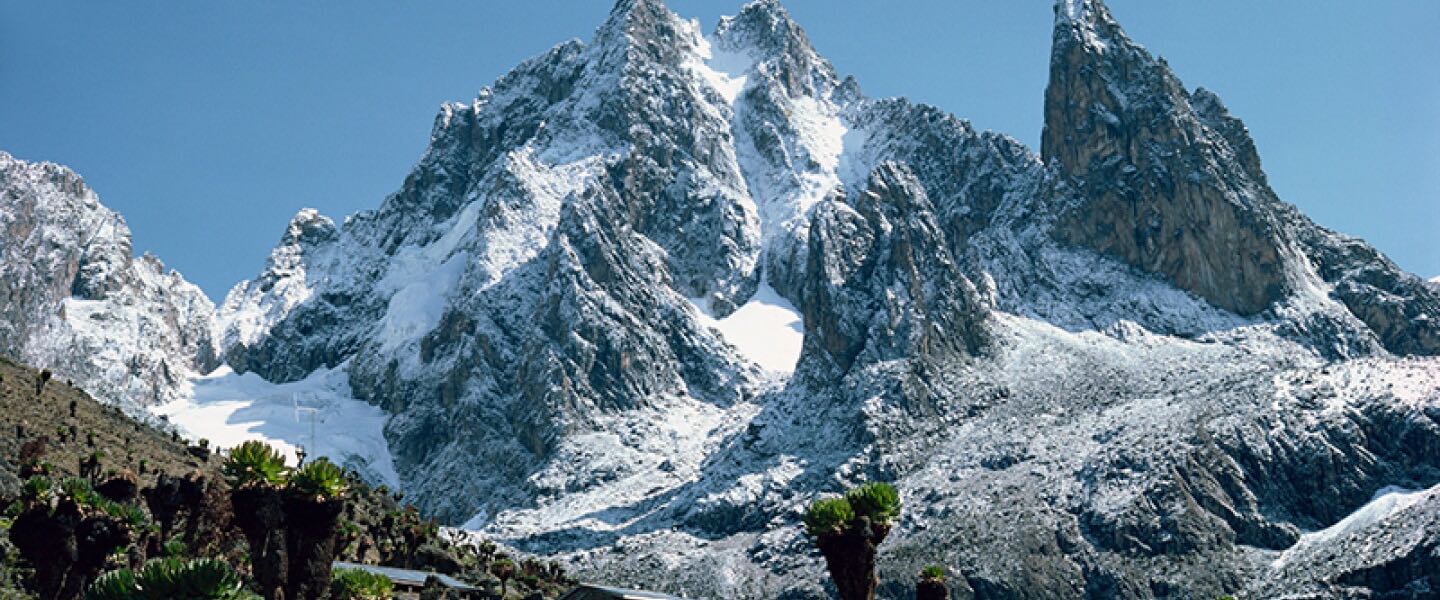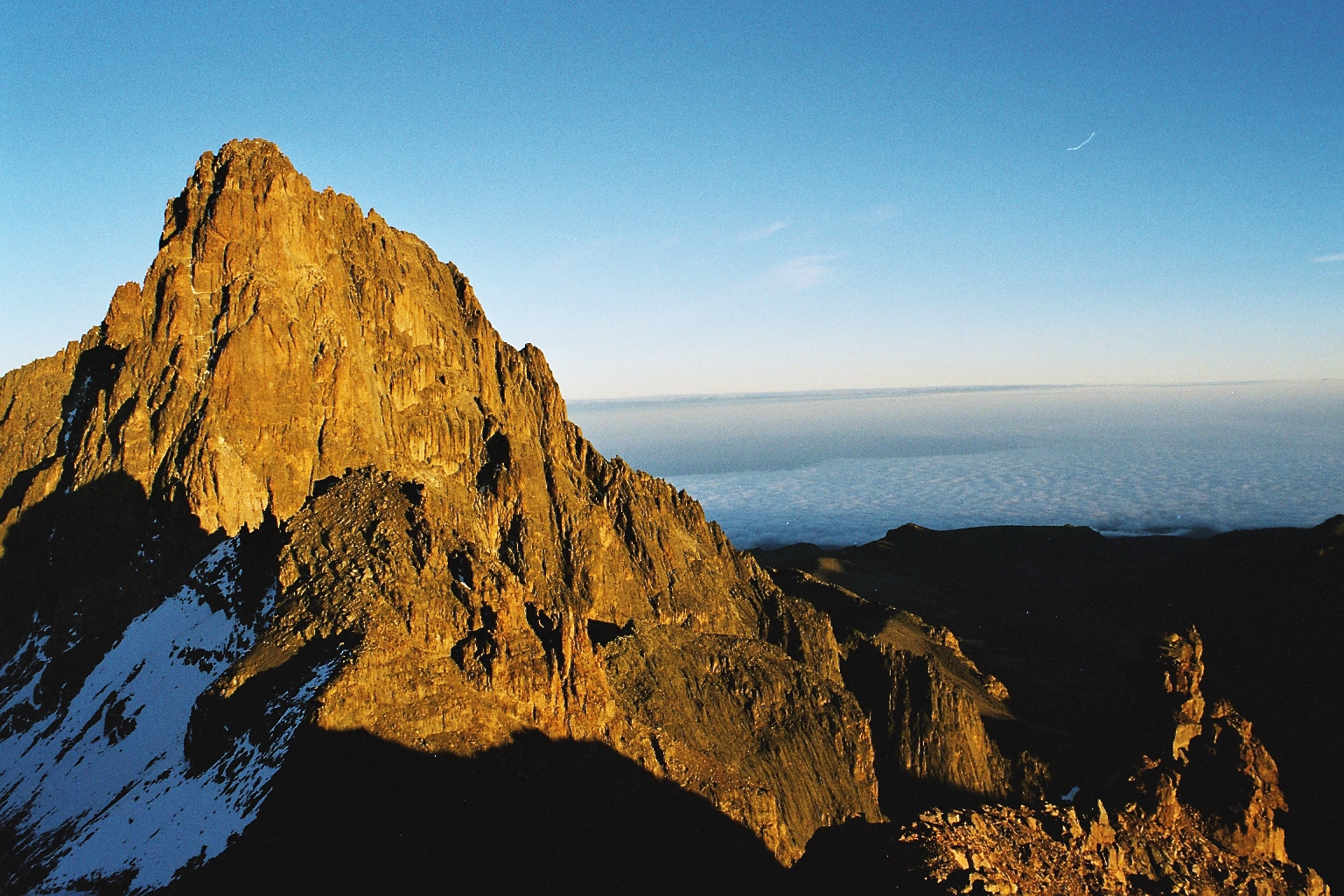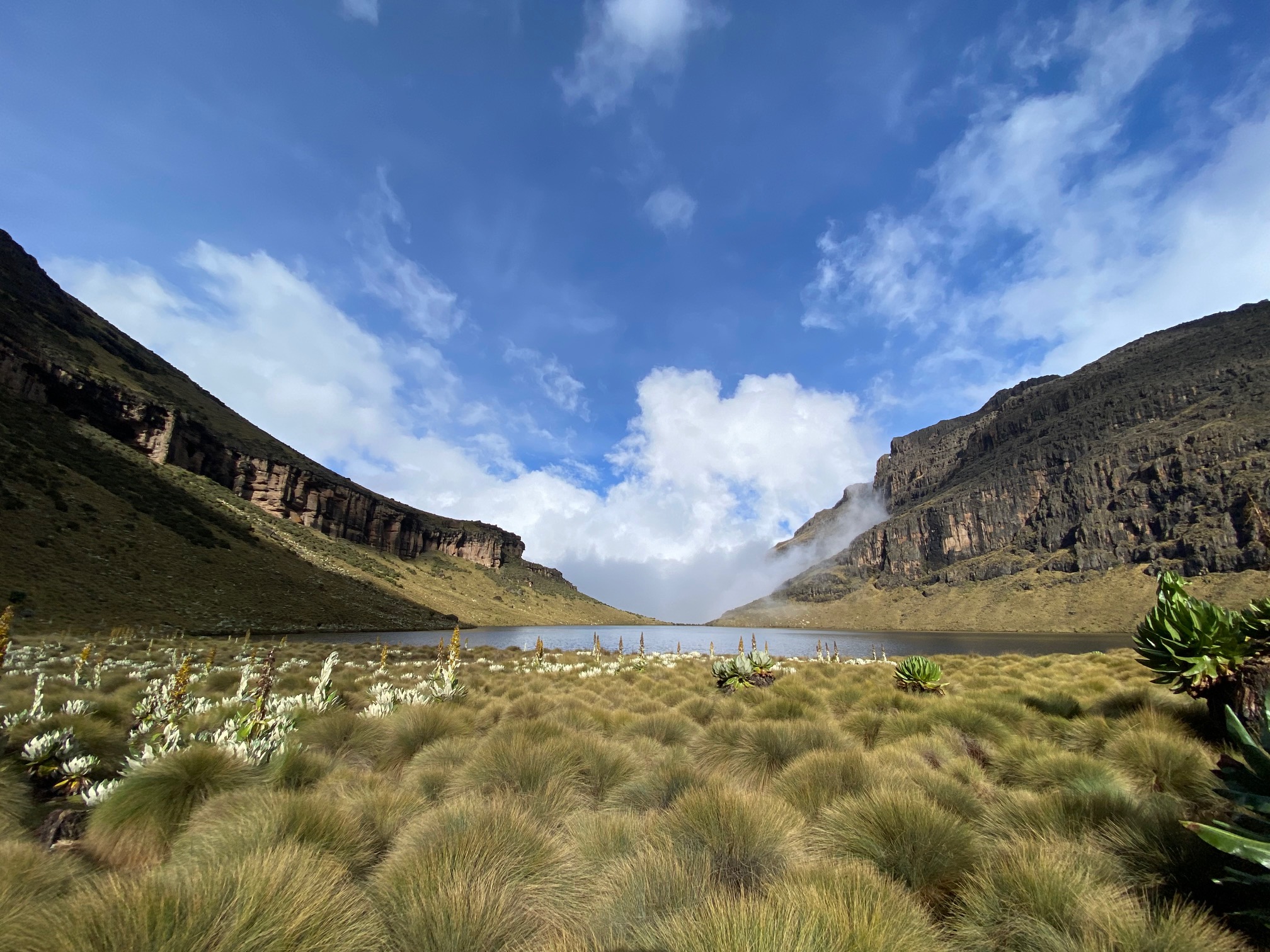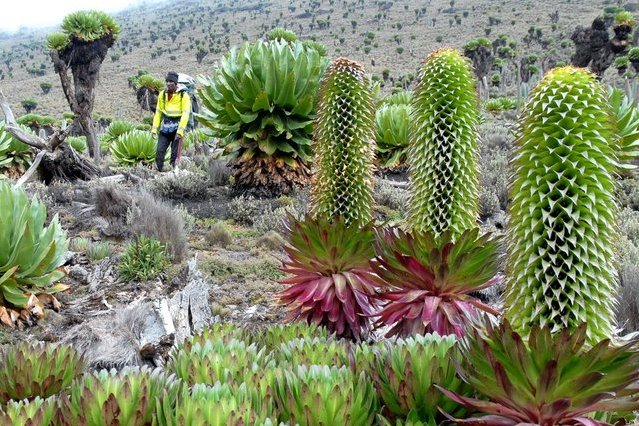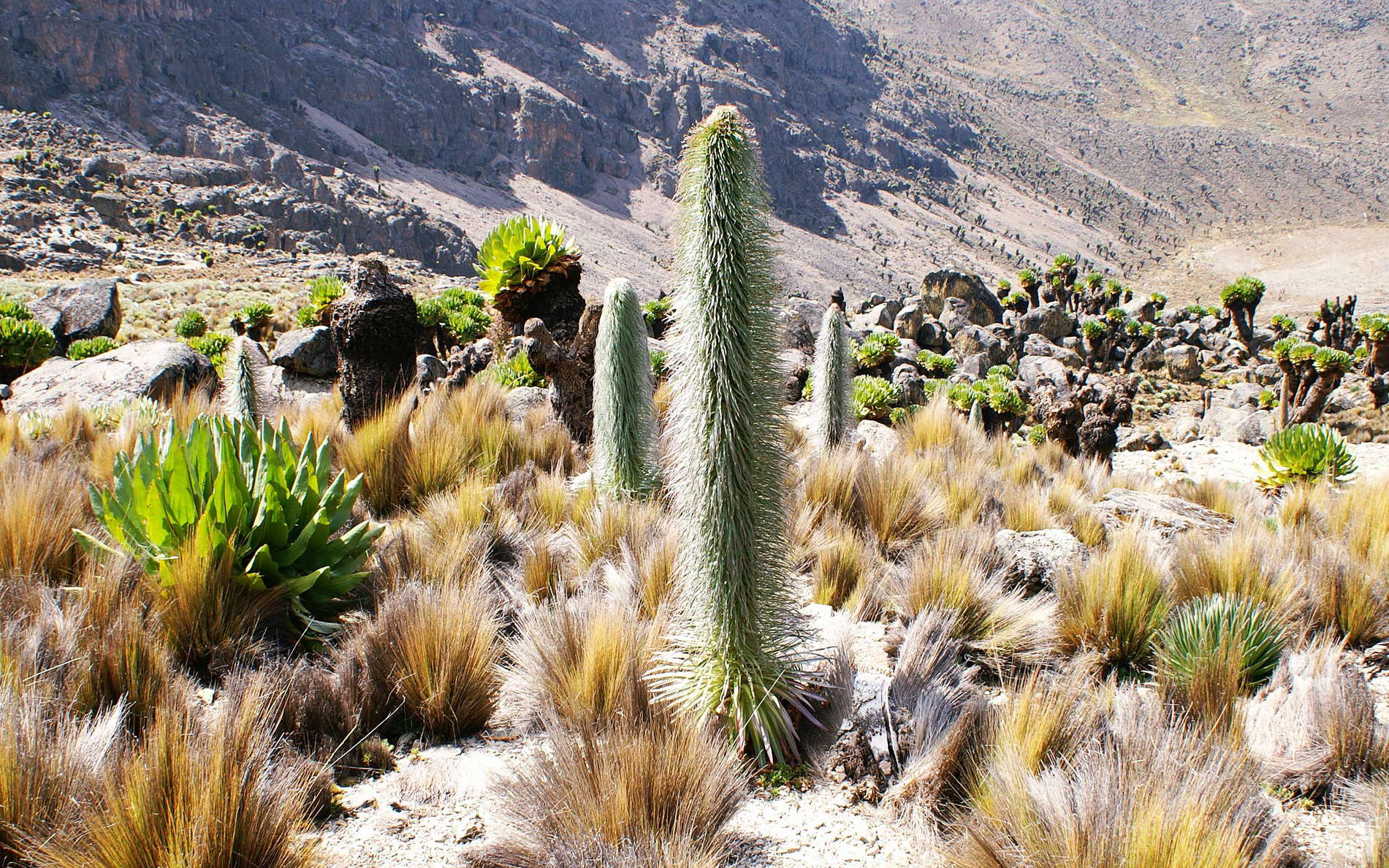Mount Kenya
Mount Kenya

Mount Kenya is the highest mountain in Kenya and the second-highest in Africa, after Kilimanjaro. Located in central Kenya, just south of the equator, it is a UNESCO World Heritage Site and a key part of the Mount Kenya National Park. The mountain is an ancient extinct volcano and is renowned for its striking landscape, which includes rugged peaks, deep valleys, and diverse ecosystems.
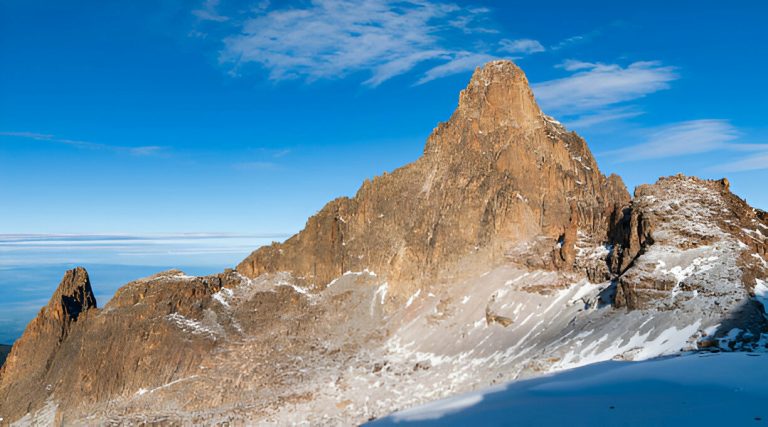
Overview of Mount Kenya.

Mount Kenya is not only a natural wonder but also a place of immense cultural and ecological importance. Its challenging climbs, stunning scenery, and rich biodiversity make it a must-visit destination for adventurers and nature enthusiasts.
Elevation:
Mount Kenya stands at 5,199 meters (17,057 feet) above sea level. The highest peaks are Batian (5,199 meters), Nelion (5,188 meters), and Lenana (4,985 meters).
Peaks:
- Batian: The highest peak and a popular target for technical climbers.
- Nelion: The second-highest peak, requiring technical climbing skills.
- Lenana: The third-highest peak and the most accessible for trekkers.
Geography and Landscape:
- Arusha to Serengeti: 6 hours’ drive.
- Ngorongoro to Serengeti: 3 hours’ drive.
- Lake Manyara to Serengeti: 4 hours’ drive.
- Tarangire to Serengeti: 5 hours’ drive.
- Flight Arusha to Serengeti: 1 hour
Varied Landscapes:
Mount Kenya’s landscape is characterized by glacial valleys, sharp peaks, and numerous tarns (mountain lakes). The mountain has several ecological zones, from montane forests to alpine moorlands and glaciers.
Flora and Fauna:
The lower slopes are covered in forests, which give way to bamboo and heathlands at higher altitudes. Unique plant species, such as giant groundsels and lobelias, are found at higher elevations. Wildlife includes elephants, buffaloes, leopards, and various species of antelope, as well as rare animals like the Mount Kenya mole-rat and sunbirds.
Climbing and Trekking:
- Mount Kenya offers a variety of trekking and climbing routes, catering to different skill levels. The most popular trekking route to Point Lenana is the Sirimon Route, known for its stunning views and diverse ecosystems. Technical climbers often aim for the more challenging peaks of Batian and Nelion.
Climate:
- The climate on Mount Kenya varies with altitude. The lower slopes have a tropical climate, while the higher regions experience alpine conditions, with cold temperatures and occasional snow and ice. The mountain has two rainy seasons, from March to June and October to December.
Cultural Significance:
- Mount Kenya is considered sacred by the Kikuyu people, who regard it as the home of their god, Ngai. The mountain has deep cultural and spiritual importance, with traditional rituals and ceremonies still conducted on its slopes.
Conservation and National Park:
- Mount Kenya National Park, established in 1949, covers an area of approximately 715 square kilometers (276 square miles). The park was designated a UNESCO World Heritage Site in 1997 for its ecological significance and stunning natural beauty.
Tourism and Activities:
- Visitors to Mount Kenya can enjoy a range of activities, including trekking, rock climbing, wildlife viewing, and bird watching. The diverse ecosystems and breathtaking landscapes make it a popular destination for nature lovers and adventure seekers.
Accessibility:
- Mount Kenya is located about 150 kilometers (93 miles) north of Nairobi and is accessible by road. The main entry points for climbers and trekkers are Naro Moru, Sirimon, and Chogoria.
Facts about Mount Kenya
- Highest mountain in Kenya, second-highest in Africa (5,199 meters).
- Three main peaks: Batian, Nelion, Lenana.
- UNESCO World Heritage Site (since 1997).
- Ancient extinct volcano.
- Presence of glaciers near the equator.
- Diverse ecosystems from montane forests to alpine moorlands.
- Unique flora: giant groundsels and lobelias.
- Rich wildlife: elephants, buffaloes, leopards, antelopes.
- Sacred to the Kikuyu people (home of their god, Ngai).
- Popular trekking and climbing destination.
Most common animals
Flora:
- Giant Groundsels
- Giant Lobelias
- Bamboo Forests
- Montane Forests
- Alpine Moorlands
- Heather Plants
- Podocarpus Trees
- Senecio Plants
- Ericaceous Shrubs
- Bog Mosses
Fauna:
- Elephants
- Buffaloes
- Leopards
- Hyenas
- Colobus Monkeys
- Sykes Monkeys
- Antelopes (e.g., Bushbucks, Duikers)
- Mount Kenya Mole-Rat
- Sunbirds
- Hyraxes
- Eagles
- Vultures
- Jackson’s Francolin
- Montane Boubou
